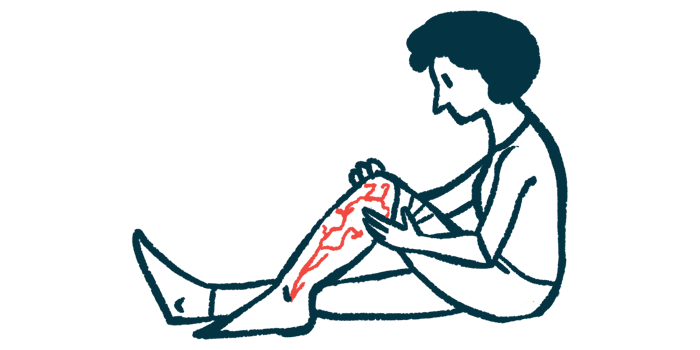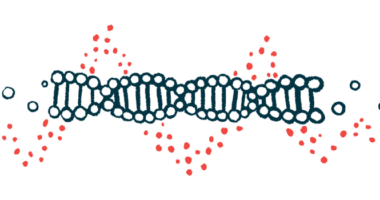Blood vessel flaws, clotting may lead to advanced FAP nerve pathology
Findings show limited role of amyloid deposits in peripheral nerves

Abnormalities in capillaries, or very small blood vessels, and inflammation from increased blood clotting may contribute to nerve damage, or neuropathy, in advanced familial amyloid polyneuropathy (FAP), according to finding that offer new insights into the mechanisms of peripheral nerves damage in FAP, offering potential targets for developing new treatments.
The study, “Nerve pathology of microangiopathy and thromboinflammation in hereditary transthyretin amyloidosis,” was published in Annals of Clinical and Translational Neurology.
FAP is caused by mutations in the TTR gene, which codes for the protein transthyretin. The mutations cause abnormal protein clumps, known as amyloid fibrils, to build up mainly in peripheral nerves, those that branch off the brain and spinal cord, contributing to neuropathy, and leads to symptoms such as loss of sensation and weakness in the extremities. However, “the relatively low number and uneven distribution of amyloid deposits in peripheral nerves [cannot] fully explain the diffuse and generalized nerve degeneration” in FAP, the researchers wrote.
Also, people with FAP patients often have cold hands or feet with pale skin, suggesting blood vessel problems that were previously attributed to problems in vasomotor control. These findings suggest other mechanisms beyond toxic amyloid fibrils may be involved in FAP-related neurodegeneration.
Here, researchers in Taiwan examined the sural nerves of 15 men and two women with advanced FAP, and four healthy adults (two men, two women) to learn whether microangiopathy, a condition marked by thick and weak capillary walls, has a role in the disease. The sural nerves provide sensation to the skin along the leg and feet.
Peripheral nerve features in FAP patients, healthy people
All the patients carried p.Ala117Ser, the most common FAP-causing TTR mutation among Taiwanese patients. Their neurological symptoms first appeared at a mean age of 60.2, and a nerve biopsy, that is, removing a small piece of nerve to examine it, was performed about three years later.
At the time of the nerve biopsy, they all had motor weakness and sensory problems in all four limbs.
The researchers first compared nerve features between the patients and the healthy people, who served as controls, and found the patients’ sural nerves were not as densely myelinated as the controls’ were. Myelination refers to the presence of a protective fatty layer around nerve fibers that allows fast signal transmission.
Less dense myelination was linked to fewer nerve areas positive for a structural nerve protein called neurofilament, but not to the presence of amyloid fibrils, suggesting “additional mechanisms for nerve degeneration,” wrote the researchers, who then examined the capillaries tracking along the sural nerves and saw the walls were nearly twice as thick and the inner open space about half as small in patients versus healthy people. The thicker the walls and the smaller the inner space, the less densely myelinated the sural nerves were. This suggested “a close relationship between microangiopathy and nerve degeneration.”
Analyses also showed that a twofold increase in collagen IV, a protein produced by endothelial cells, and key for vessel stability “was responsible for the increased [capillaries] thickness,” the researchers wrote. Endothelial cells are those that line blood vessels.
This was confirmed in lab-grown human capillary endothelial cells producing either healthy or p.Ala117Ser-mutated transthyretin protein. The amount of collagen IV produced by them was nearly twice as high in the presence of the mutated transthyretin versus the healthy protein.
The patients’ endothelial cells near sural nerves showed higher levels of a cell death marker, and nearly a third (31.5%) of them were covered by fibrin, a protein involved in blood clotting, versus none from healthy controls.
The capillaries of FAP nerves also showed higher levels of coagulation factor XIIIA, which promotes blood clotting, and less tissue plasminogen activator, which helps break down blood clots.
Also, macrophages, a type of immune cell called to sites of inflammation to help clear threats and debris, infiltrated the patients’ blood vessels more than those of the healthy people. Other findings consistent with thromboinflammation, or inflammation that occurs from blood clotting, were identified in patients’ capillaries. The results suggest both microangiopathy and thromboinflammation may contribute to nerve damage in advanced FAP.
“Microangiopathy with thromboinflammation is characteristic of advanced-stage [FAP] nerves, which provides an add-on mechanism and therapeutic target for nerve degeneration,” wrote the scientists, who said more research, including with FAP patients with other disease-causing mutations, is needed to confirm if the findings can be generalized to the whole patient population.







